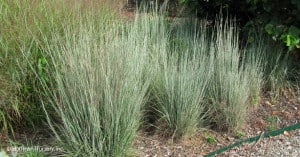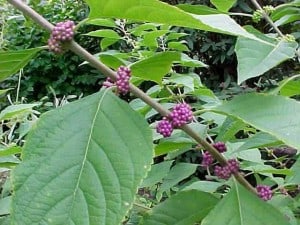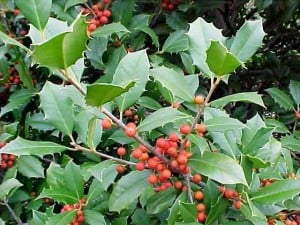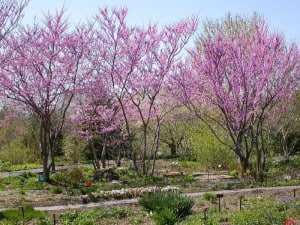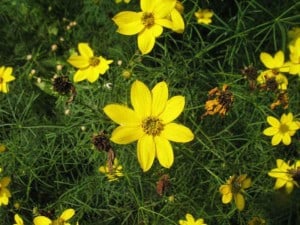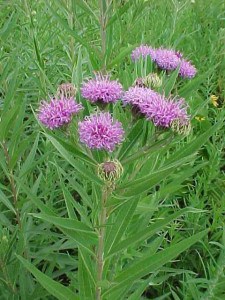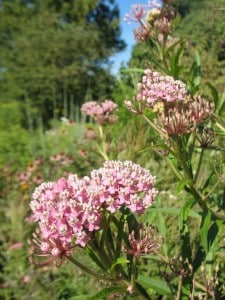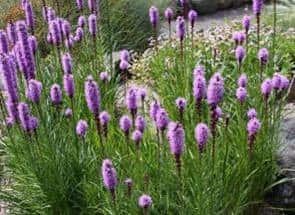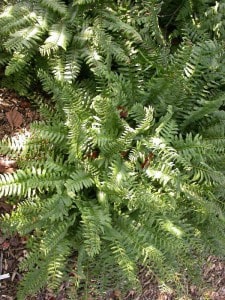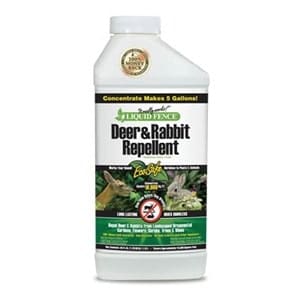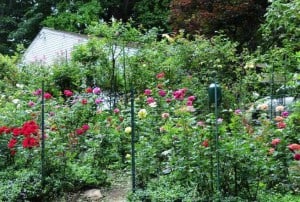Gardening With Deer in Howard County, MD
Deer: we love them and find them beautiful, majestic, yet they are quite pests when it comes to our gardens! There are plenty of ways that we can maintain beautiful landscapes while keeping the deer from eating our plants. There are many plants that are more resistant to deer and can survive being nibbled on, and there are many deterrents that will help keep deer away from your plants. The key to gardening with deer is commitment. Try different methods if one doesn’t work. Switch your methods occasionally. Some years you’ll find that deer avoid your plantings and some years they’ll feed heavily. Often they’ll feed more when the woods are defoliated and then move back out to the woods in the spring when the leaves come back. It’s good to see the patterns the deer follow on your property. You may be able to block them if you find one main entry point that they access your garden from. At our house our dog Grace ensures the deer stay away from our gardens.
Gardening with deer can be very frustrating but the main part is it takes a little time and attention on your part. Check your new plantings for munching and if you see it then address it asap. Plants are forgiving as long as you notice and respond to the issue at hand.
Deer-resistant plants
There are many native plants that are also deer-resistant. Here are a some of our favorites, along with tips of where to place them and care for them:
Schizachyrium scoparium, commonly called Little Bluestem
Little Bluestem grass is a very tolerant grass that can live in a variety of soil conditions, and prefers sun. It also tolerates drought conditions and has low maintenance needs. It is beautiful year-round, changing colors with the season.
Callicarpa americana, commonly called Beautyberry
Beautyberry is a small shrub that typically grows about 6 feet tall. It prefers sun, but can be grown in light shade. Once the roots get established, the plant requires little care. They can be grouped together or naturalized, or it could be used as a bordering plant.
Ilex opaca, commonly called American holly
The American holly is another shrub with berries. It can tolerate a variety of soils, but needs well drained soils. This is a great wintering shrub, providing color through the season. The berries provide a great food source for birds.
Cercis canadenis, commonly called Redbud
Redbuds are a great tree that can grow 20-30 feet tall. They attract butterflies with pink-purple flowers that bloom in early spring. It requires very little maintenance. It would look great along patios or driveways, bordering streets, and works great in a naturalized design as well.
Coreopsis verticillata, commonly called tickseed
Tickseeds have beautiful yellow blossoms that attract butterflies and usually bloom from June to September. They are tolerant of heat, drought, and humidity, making it perfect for Maryland’s unpredictable summers! They are easy to grow in well drained soils that are sandy or rocky, and prefer full sun. They go very well along borders and in naturalized areas.
Vernonia novabonariensis, commonly called ironweed, or New York ironweed
Ironweed is a great perennial that tolerates a variety of soils and prefers medium wet soils, which make them perfect for a rain garden. It is also great for borders and naturalizing your landscape.
Asclepias incarnata, commonly called swamp milkweed
Swamp milkweed is one of our favorites! It is pretty easy to grow, very tolerant in well-drained soils, and is great food for butterflies. It is great for butterfly or pollinator gardens, sunny spots in your landscape, and stream or pond banks.
Liatris spicata, commonly called blazing star
Blazing star is great for rain gardens since they prefer wet soils that drain well. It typically grows 2-4 feet tall, which makes it a great border plant.
Plystichum acrostichoides, commonly called Christmas fern
Christmas ferns are an evergreen, non-flowering plant that can be grown in part or full shade. It grows well when planted in shade gardens, shady portions near walls or foundations of a home, or slopes in your landscape.
Here is a list of deer resistant perennials and shrubs from Perennial Farm:
Acanthus spinosus, Achillea Aconitum, Actaea, Agastache, Ajuga, Alchemilla mollis, Arctosthapylos, Armeria, Artemisia, Astilbe, Baptisia, Berberis, Brunnera, Buddleia, Calamintha, Ceratostigma, Chelone, Chrysogonum, Cimicifuga, Convallaria, Coreopsis, Crocosmia, Dicentra, Digitalis, Epimedium, Euphorbia, Ferns, Fothergilla, Galium, Geranium, Helianthus, Helleborus, Hibiscus, Iberis, Iris, Itea, Kniphofia, Lamium, Lamiastrum, Lavandula, Liatris, Ligularia, Lobelia, Lychnis, Meehania, Mentha, Monarda, Nepeta, Orignum, Paeonia, Perovskia, Platycodon, Pulmonaria ,Rosmarinus, Salvia, Santolina, Scabiosa, Sempervivum, Spiraea, Stachys, Thymus, Tradescantia, Verbena, Veronica, Vinca, Weigela florida, Yucca, Ornamental grasses
Here is a list of deer resistant perennials and shrubs from Babikow Greenhouses:
Achillea, Aconitum, Agertum, Alchemilla, Amsonia, Angelica, Aquilegia canadensis, Arisaema, Artemisia, Arum, Baptisia, Begonia, Bergenia, Brunnera, Calamintha nepetoides, Campanula persicifolia, Caryopteris, Ceratostigma, Chelone, Cimicifuga racemosa, Dicentra spectabilis, Digitalis, Echinacea, Epimedium, Euphorbia, Geranium macrorrhizum, Helleborus, Lamium, Lantana, Lavandula, Leymus, Matteuccia struthiopteris, Miscanthus, Molinia, Monarda, Nepeta, Onoclea Sensibilis, Origanum, Osmunda, Pennisetum, Perovskia, Polystichum acrostichoides, Primula japonica, Pulmonaria, Salvia, Santolina, Sarcococca, Stachys, Thymus, Viola labradorica.
Here is Sun Nurseries list of deer resistant plants.
We find that often deer don’t read the lists but we can still try!
Deterrents:
There are a variety of ways that you can deter deer from eating your plants. Some include Liquid Fence, natural deterrents, sprinklers, and netting.
Our clients have had great experiences with Liquid Fence, and we have as well. Just be sure that you apply as the directions say on the bottle. The Liquid Fence website suggests the following for application, “Apply liberally to plants and their perimeter during a dry period. Repeat process 1 week later and then approximately once per month thereafter. Areas where feeding pressure from deer and rabbits is intense, spray Liquid Fence Deer & Rabbit Repellent once a week for 3 weeks and then approximately once per month thereafter.”
Natural DIY Deer Deterrents
You can create and apply your own spray! There are a variety of recipes available online, but one of our favorites is: 5 tablespoons of cayenne pepper and 1 tablespoon of olive oil to 1 gallon of water, mix and apply when it has just rained or is dry out.
Deer Scaring Motion Detecetion Sprinklers
Motion detection sprinklers are some of the best deterrents we have when it comes to deer. Deer do not like to be touched, and the water will scare them away. Bonus, the sprinkler will likely scare any other unwanted animals from your yard as well! It also waters your garden.
Wildlife Netting
Netting can be used to keep deer away as well. Fishing line and stakes can be used to keep deer away, or you can use landscape netting. Fishing line makes it more invisible to deer, so they are likely to run into the line, get scared since they were touched, and run off!
Let us know if you have any favorite ways to keep deer from nibbling on your plants!


